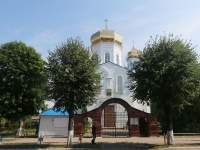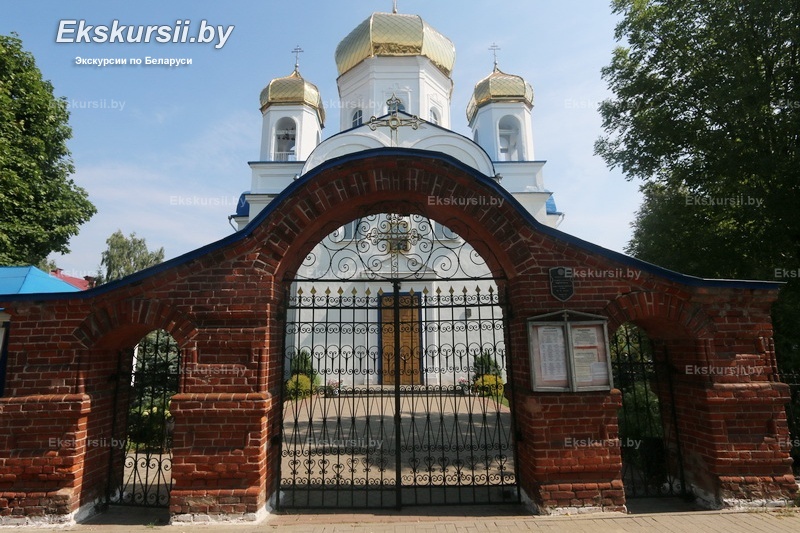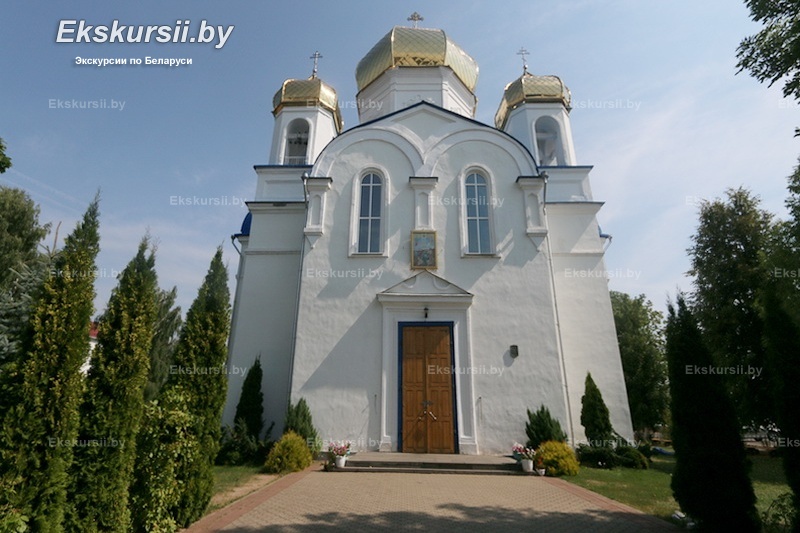- Home
- →
- Attractions
- →
- Preobrazhenskaya church in Shklov
Preobrazhenskaya church in Shklov
Shklov Transfiguration Church is one of the most striking and architecturally interesting Orthodox landmarks in eastern Belarus. It is located in the center of the town of Shklov, on the right bank of the Dnieper River, and is a significant attraction of the Mogilev region. This majestic church impresses with its harmonious architecture, rich symbolism, and deep historical and cultural context.
The church not only adorns the cityscape but also serves as an important center of spiritual life. It is part of popular excursions around Belarus, as well as included in pilgrimage trips, architectural and cultural-historical tours. Thanks to the well-developed tourist infrastructure, it is easy to book a guided tour of this remarkable monument. Excursions from Minsk are especially popular — both one-day and multi-day trips with visits to other attractions in the Mogilev region.
History of Construction
The initiative to build the Transfiguration Church in Shklov arose at the beginning of the 20th century — during a time when Orthodox architecture was experiencing a revival. Construction began in 1904, funded by parishioners and benefactors, and soon a majestic church was built in the city center, consecrated in honor of the Transfiguration of the Lord.
Before the revolution, the church served not only as a religious but also as a social center — services, baptisms, weddings, spiritual talks, and celebrations were held here. With the advent of Soviet power, the building lost its religious function. Like many other churches, it was closed, repurposed as a warehouse, and gradually fell into disrepair. During the Soviet decades, the interior was destroyed, domes were demolished, and icons were lost or destroyed.
The revival of the church began in the 1990s, when believers succeeded in returning it to the Belarusian Orthodox Church. Since then, restoration work has been carried out, interiors have been recreated, and altars re-consecrated. Today, the church is active again, regularly welcoming parishioners and pilgrims, as well as visitors who come as part of excursions around Belarus.
Architecture and Spiritual Life
The Shklov Transfiguration Church is a vivid example of eclecticism, harmoniously combining elements of the pseudo-Byzantine style with features of Art Nouveau, typical of the late 19th – early 20th century. This architectural synthesis makes the church distinctive and easily recognizable.
The design features classic Byzantine elements: a massive octagonal drum with a dome, arched windows, a three-part apse, and a cross-in-square plan. At the same time, the facades are decorated in a modern way — using flowing lines, nonstandard masonry, elegant ornaments, and asymmetry, which are characteristic of Art Nouveau. The white walls and dark roofs create a striking contrast, and the central dome stands out against the townscape.
Inside, the church is bright and spacious. The atmosphere is shaped by the iconostasis, restored frescoes, antique icons, and contemporary wall compositions. The church is active, with liturgies, services on religious holidays, baptisms, weddings, and prayer services. Believers find solace and inspiration here, while tourists experience both aesthetic and spiritual enrichment.
Excursions with Church Visit
The Shklov Transfiguration Church is a key site for cultural, architectural, and pilgrimage routes. It is included in various excursions around Belarus. Thematic guided tours are held here, dedicated to the history of Shklov, religious architecture, the fate of Belarusian churches, and the revival of spirituality.
You can book a guided tour of the church as a standalone trip or include it in a broader itinerary across the Mogilev region. The most popular option is a tour from Minsk, which can be completed in one day: the drive takes about 3 hours one way and allows you to see several cultural landmarks at once.
Such excursions are often accompanied by guides’ stories about Shklov’s history, its merchant and spiritual heritage, famous natives of the town, and the fate of churches during and after the Soviet era.



